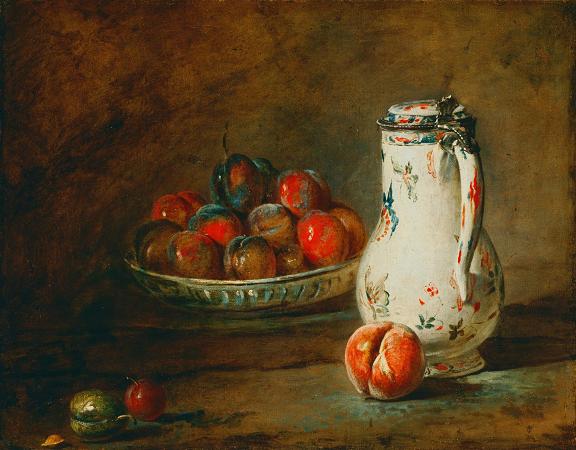Phillips Collection. The Phillips Collection is an art museum founded by Duncan Phillips and Marjorie Acker Phillips in 1921 as the Phillips Memorial Gallery located in the Dupont Circle neighborhood of Washington, D.C. Phillips was the grandson of James H. Laughlin, a banker and co-founder of the Jones and Laughlin Steel Company. Among the artists represented in the collection are Pierre-Auguste Renoir, Gustave Courbet, El Greco, Vincent van Gogh, Henri Matisse, Claude Monet, Pablo Picasso, Georges Braque, Pierre Bonnard, Paul Klee, Arthur Dove, Winslow Homer, James McNeill Whistler, Jacob Lawrence, Augustus Vincent Tack, Georgia O'Keeffe, Karel Appel, Joan Miro, Mark Rothko and Berenice Abbott. Duncan Phillips played a seminal role in introducing America to modern art. Born in Pittsburgh —the grandson of James H. Laughlin, a banker and co-founder of the Jones and Laughlin Steel Company, Phillips and his family moved to Washington, D.C., in 1895. He, along with his mother, established The Phillips Memorial Gallery after the sudden, untimely deaths of his brother, James Laughlin Phillips, and of his father, Duncan Clinch Phillips, a Pittsburgh window glass millionaire and member of the South Fork Fishing and Hunting Club, owners of the dam whose failure resulted in the Johnstown Flood. Beginning with a small family collection of paintings, Phillips, a published art critic, expanded the collection dramatically. A specially built room over the north wing of the family home provided a public gallery space. With the collection exceeding 600 works and facing public demand, the Phillips family moved to a new home in 1930, turning the entire 21st Street residence into an art museum. Duncan Phillips married painter Marjorie Acker in 1921. With her assistance and advice, Phillips developed his collection as a museum of modern art and its sources, believing strongly in the continuum of artists influencing their successors through the centuries. His focus on the continuous tradition of art was revolutionary at a time when America was largely critical of modernism, which was seen as a break with the past. Phillips collected works by masters such as El Greco, calling him the first impassioned expressionist; Jean-Baptiste-Simeon Chardin because he was the first modern painter; Francisco Goya because he was the stepping stone between the Old Masters and the Great Moderns like Cezanne ; and Edouard Manet, a significant link in a chain which began with Goya and which to Gauguin and Matisse. Polly Fritchey, hostess and wife of columnist Clayton Fritchey, helped the Phillips Collection evolve from a small family museum into a public art gallery and was one of the first trustees appointed from outside the family. Moreover, she helped launch its national fundraising campaign. The Phillips Collection, opened in 1921, is America's first museum of modern art. Featuring a permanent collection of nearly 3,000 works by American and European impressionist and modern artists, the Phillips is recognized for both its art and its intimate atmosphere. It is housed in founder Duncan Phillips' 1897 Georgian Revival home and two similarly scaled additions in Washington, D.C.'s Dupont Circle neighborhood. The museum is noted for its broad representation of both impressionist and modern paintings, with works by European masters such as Gustave Courbet, Pierre Bonnard, Georges Braque, Jacques Villon, Paul Cezanne, Honore Daumier, Edgar Degas, Vincent van Gogh, Paul Klee, Henri Matisse, Claude Monet, and Pablo Picasso. In 1923, Phillips purchased Pierre-Auguste Renoir's impressionist painting, Luncheon of the Boating Party, the museum's best-known work. From the 1920s to the 1960s, Phillips re-arranged his galleries in installations that were non-chronological and non-traditional, reflecting the relationships he saw between various artistic expressions. He presented visual connections; between past and present, between classical form and romantic expression; as dialogues on the walls of the museum. Giving equal focus to American and European artists, Phillips juxtaposed works by Winslow Homer, Thomas Eakins, Maurice Prendergast, James Abbott McNeill Whistler, and Albert Pinkham Ryder with canvases by Pierre Bonnard, Peter Ilsted and Edouard Vuillard. He exhibited watercolors by John Marin with paintings by Cezanne, and works by van Gogh with El Greco's The Repentant St. Peter. Phillips' vision brought together congenial spirits among the artists, and his ideas still guide the museum today.
more...














